What to know
- Free users of ChatGPT can generate responses as long as 4096 tokens ~ roughly 3000 words. In practical terms, you may get significantly shorter responses, with the AI tool generating less than just 600 words or cutting off generation midway through a paragraph.
- You can bypass the above limit by subscribing to ChatGPT+ which offers support for twice as many words than you get on a free OpenAI account.
- To force ChatGPT to continue, you can reply to the chatbot with keywords like “Continue writing”, “Go on”, “Finish answer” or specify the portion of text you want it to continue from.
- To generate longer responses, you can request ChatGPT to divide its answers into pages or chapters or ask it to create an outline on a topic and prompt it every time to generate text for different subheadings.
ChatGPT can be a useful tool to extract information on a wide range of topics but like any piece of technology, it comes with certain limitations. When generating detailed textual content, the AI tool can sometimes create a truncated response where ChatGPT stops adding content midway through a paragraph without completion.
If you’re wondering why that may be happening and want to learn how you can make ChatGPT continue writing, the following post should help you get that done with ease.
What’s the maximum limit for a response from ChatGPT?
ChatGPT models process text using tokens, which are common sequences of characters found in the text. Currently, the AI chatbot accepts a maximum limit of 8,192 tokens on GPT-4 and 4,096 tokens on GPT-3.5; the latter is to be considered since GPT-3.5 is still what’s used by most people. This limit applies to both your input and ChatGPT’s response, meaning the combined number of tokens for a question and its answer shouldn’t go beyond 4,096 tokens on GPT-3.5.
OpenAI says the general rule of thumb is that 1 token corresponds to roughly 4 characters of text, which can constitute three-fourths of a word. To give you an idea, 100 tokens would include roughly 75 words, meaning a higher limit of 4096 characters should count to a maximum of roughly 3072 words. When ChatGPT exceeds the token limit, the response that you get may be truncated or cut off midway.
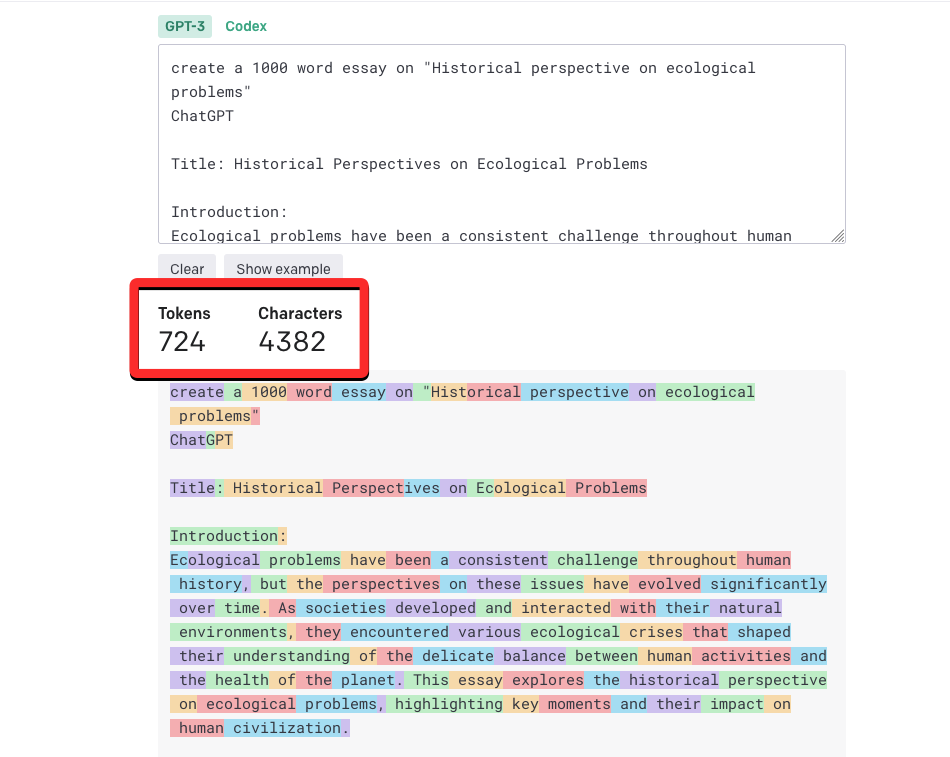
While 3000 words still sound good enough for most practical uses, we found that most of ChatGPT’s responses do not go beyond roughly 600 words or 730 tokens. In our testing, ChatGPT would either create a much shorter completed response or stop generating text midway through a paragraph.
Another thing to consider with this tokenized system is that the amount of tokens consumed also depends on the kind of words that get used. Ideally, less complex and common English words would take up lesser tokens than more sophisticated words or those in a less popular language. What this means is you may get shorter or truncated responses when using a foreign language or requesting ChatGPT to reply to you in more complex words.
If you’re wondering why OpenAI limits your responses, there’s a good reason behind it. When you generate one response from the AI tool, it requires significant computational power which costs actual money and this cost increases with the length of the content being generated. Now think of millions of others using ChatGPT and how much more money it would cost OpenAI to generate their responses.
Make ChatGPT continue writing a response [2 ways]
If ChatGPT’s responses get cut midway through the answer, there are ways to make the AI tool generate a complete response.
Method 1: Simply ask ChatGPT to continue the response
The easiest way to make ChatGPT continue writing is by asking it to do so straightforwardly. When a response from ChatGPT is cut off in the middle of an answer, you can reply with any of the following prompts as a reply to the chatbot.
- Continue writing
- Please continue
- Go on
- Keep going
- Finish your answer
- Continue from your previous response
- Continue from the last line
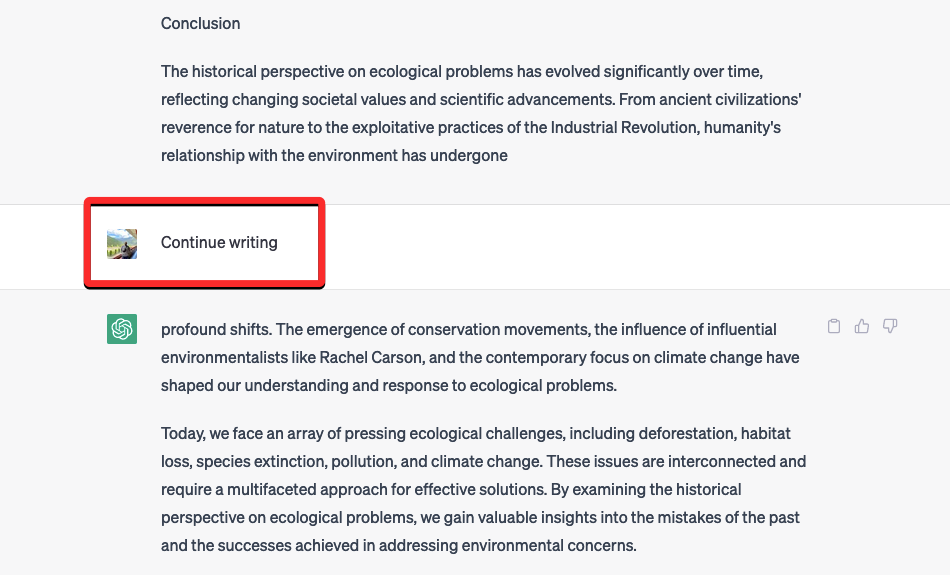
The quality of subsequent responses will get better when you’re more specific about what you want ChatGPT to continue. Here’s an example: Can you continue writing from the last line of the fourth paragraph from your previous response?
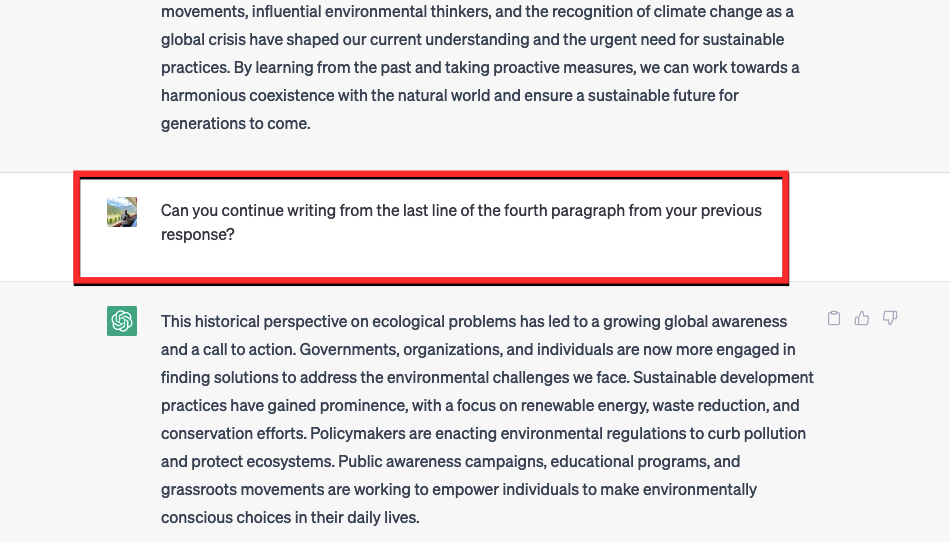
If you’re using ChatGPT to write codes for you, you can use the following prompt to make it continue writing code from where it stopped: Print the rest of the code without reprinting what you've just showed me.

If you’re unable to make ChatGPT follow your “continue” queries with the right response, you can enter the following text (courtesy: Reddit) inside ChatGPT to continue writing from where it left off:
From now on when I say "continue" you must revisit the last sample of code you gave. Look at the last line of the code and continue the code from there. Do not start from the beginning of the code.
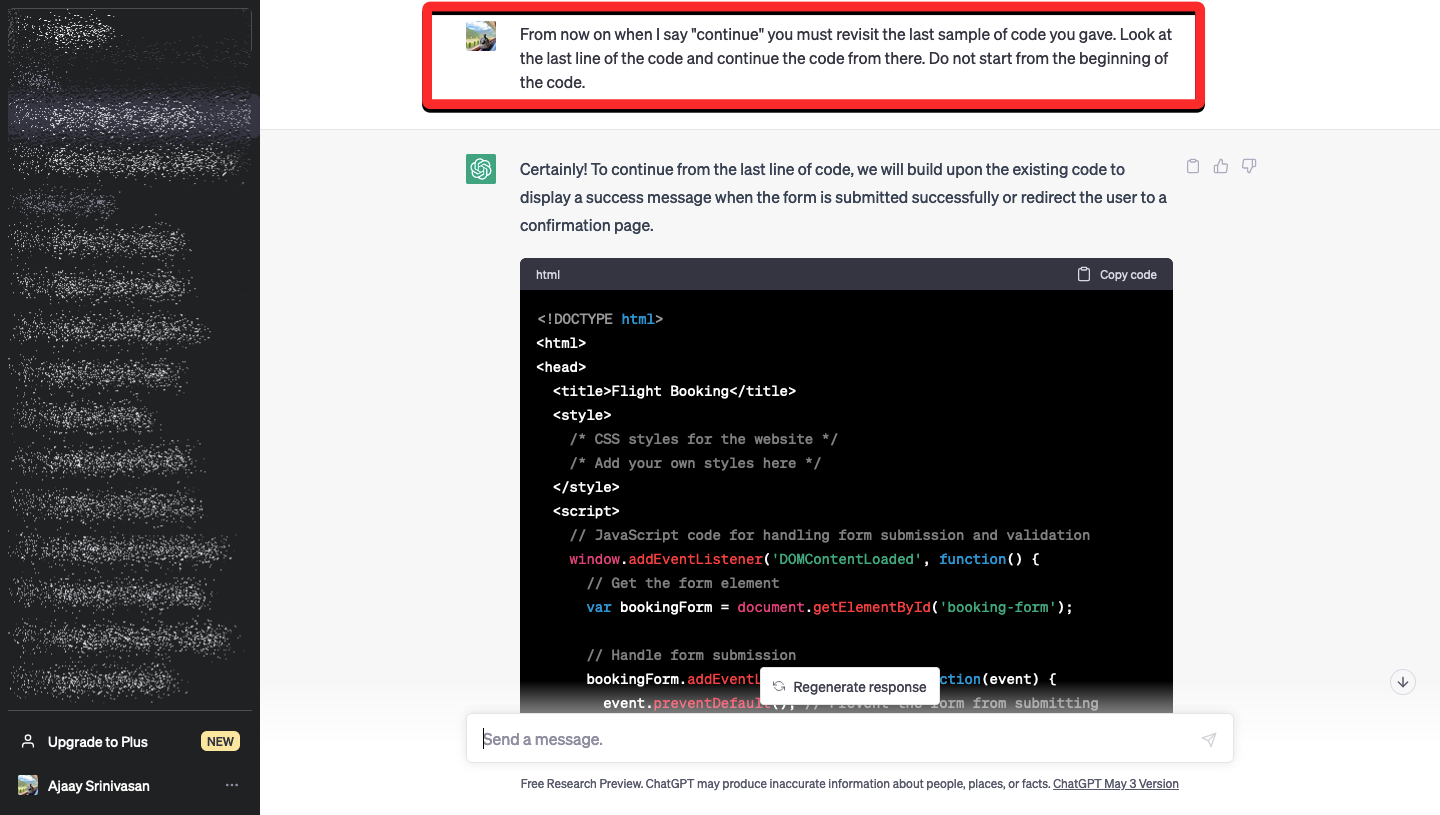
Now, every time you type “Continue“, ChatGPT will respond with the next sets of codes.
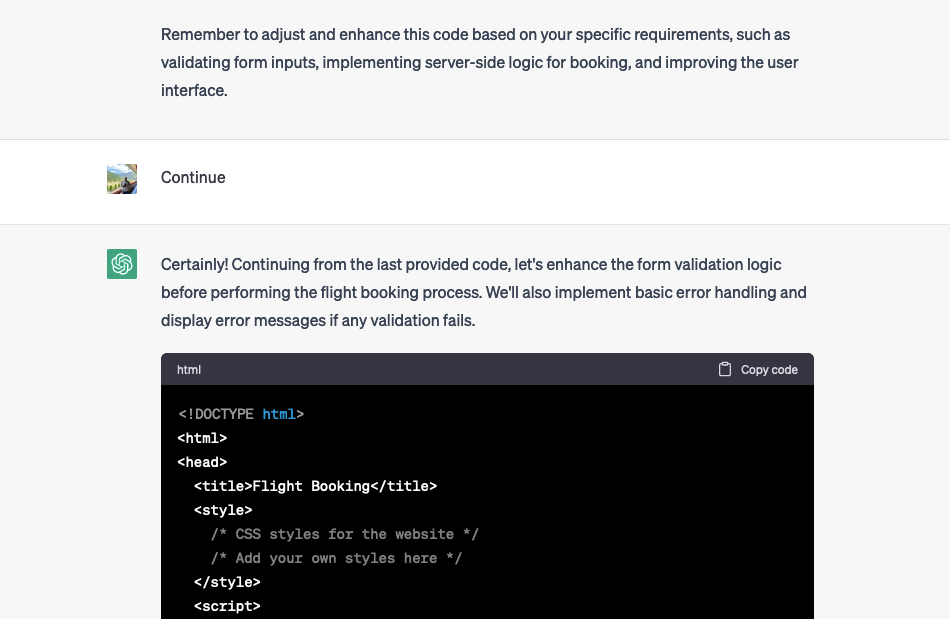
Method 2: Generate a response from specific text
Method 1 should work for most of the responses you get from ChatGPT but to make sure you get relevant answers, you can specify what text you want the AI tool to continue writing from. For that, you can copy the last line of text that ChatGPT shared from the previous response and paste it inside the following prompt:
Can you continue from "<copied text>" from your previous response to generate the next part of your response?
This should help you get improved responses when compared to method 1.
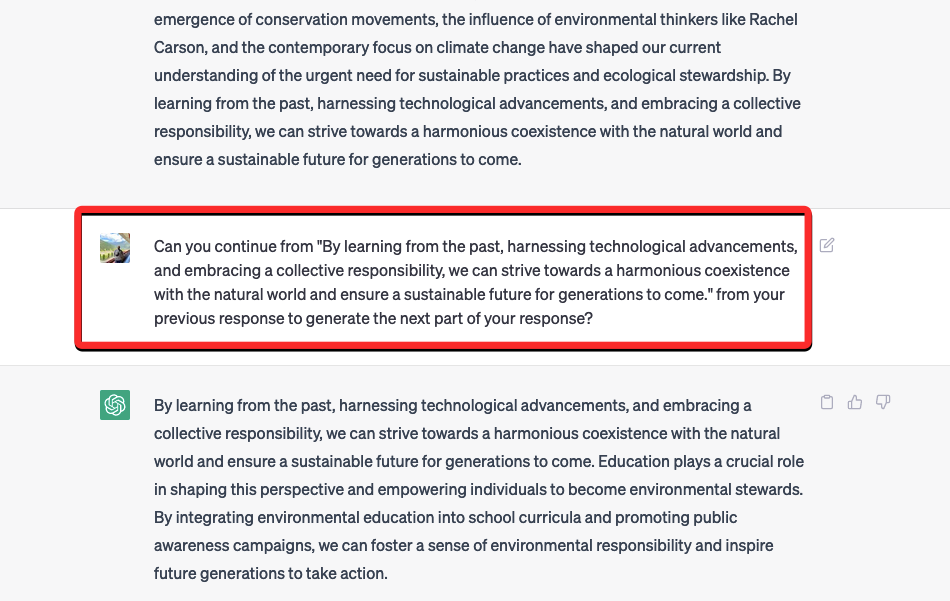
If ChatGPT replies with the same text as your previous response or cannot provide any response, you can use this prompt instead:
This is how you left the answer - "<copied text>". Can you continue from this exact spot without repeating any of what you've shown me already or is copied here?
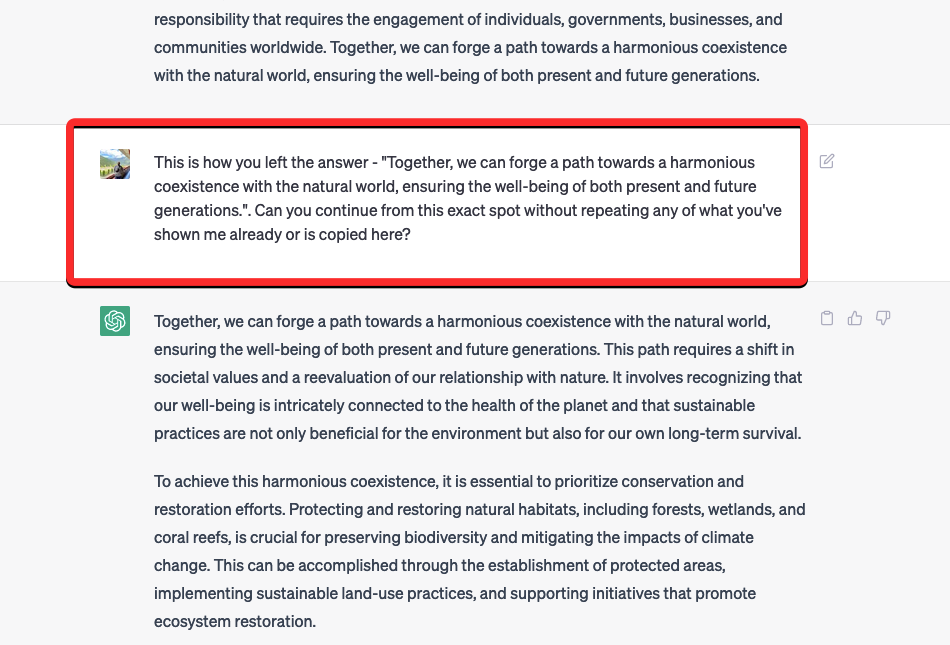
This should help ChatGPT understand your prompt better and provide you with a response that isn’t the exact duplicate of the previous one.
Prevent Response Cutoff in ChatGPT [3 ways]
You can also plan and prevent the response cutoffs. It’s easy. Here are three ways to achieve this.
Method 1: Split responses into pages or chapters
If you find it annoying to make ChatGPT continue responding, an easier approach to get the job done is to make it split its responses into multiple pages or chapters. You can script your input in a style similar to this:
Create an essay on "Historical perspective on ecological problems" and divide it into 20 different pages. Let's start with Page 1.
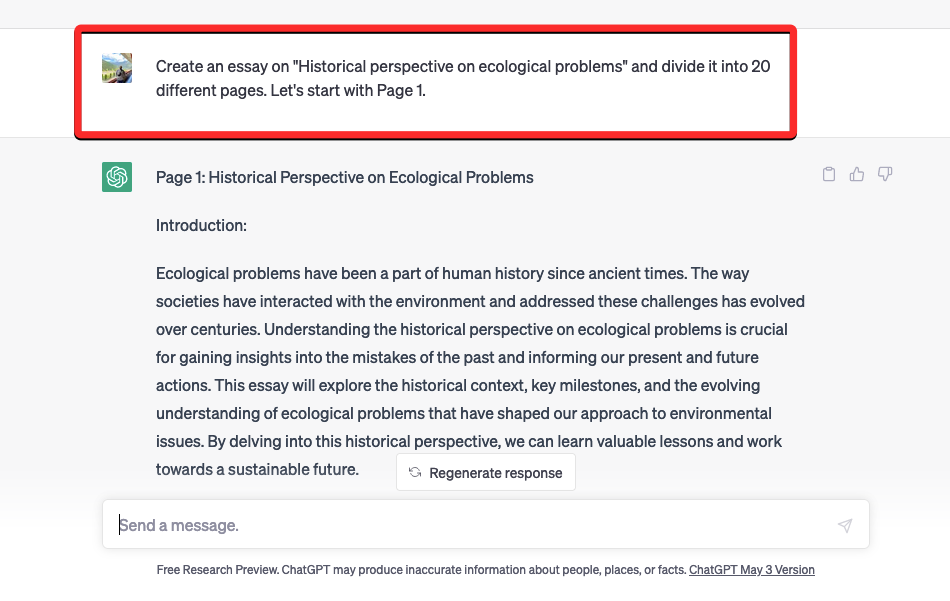
When ChatGPT generates a response for the first page, you can get subsequent responses by typing Page 2, Page 3, and so on.
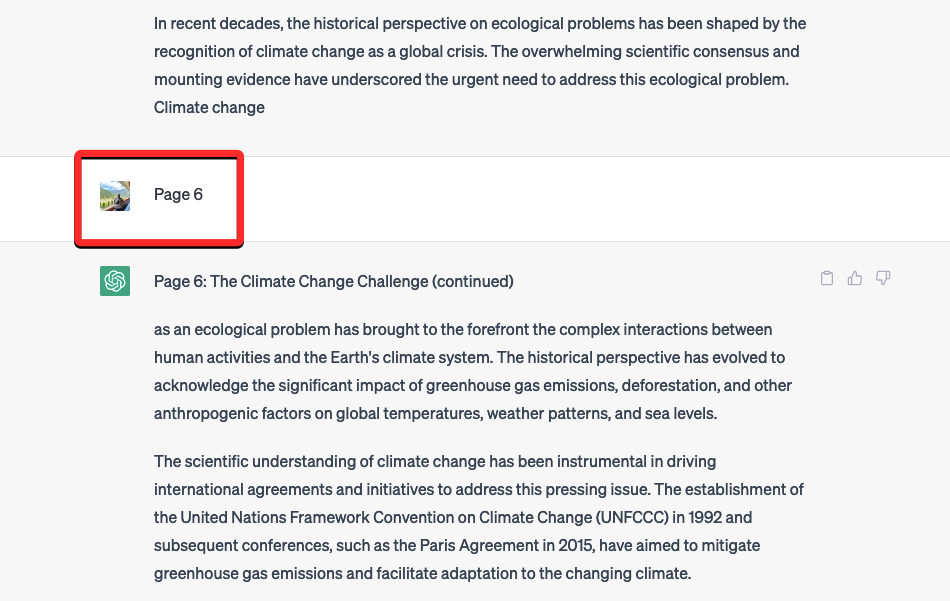
You can also try generating responses in chapters instead of pages to get responses in different sections.
Method 2: Request an outline first and then additional info
When the above methods aren’t helping, you can simplify the process of getting larger responses by requesting ChatGPT to create an outline on a topic you want to write on. When an outline is shared by the AI tool, you can copy the first subheading and ask ChatGPT to create a detailed section on this subheading. After each response, you can enter the subsequent subheadings inside the tool and ask it to create and generate text for that section one at a time.
To get started, you can go with this prompt to generate an outline from ChatGPT:
Create an outline on <topic> with subheadings. Here, replace <topic> with the subject you want to write on.
ChatGPT will now respond with an outline as you requested.
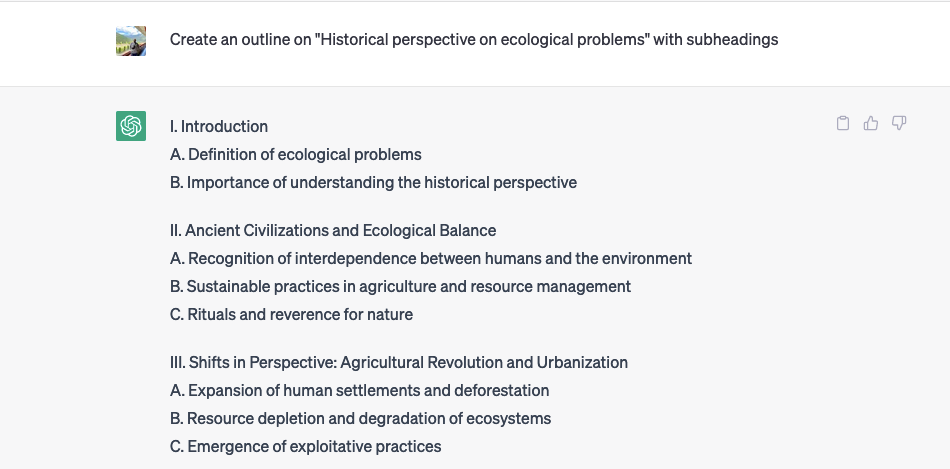
When it does so, you can prompt it to generate text for <this section> where you paste the first subheading from the outline shared in ChatGPT’s previous response.
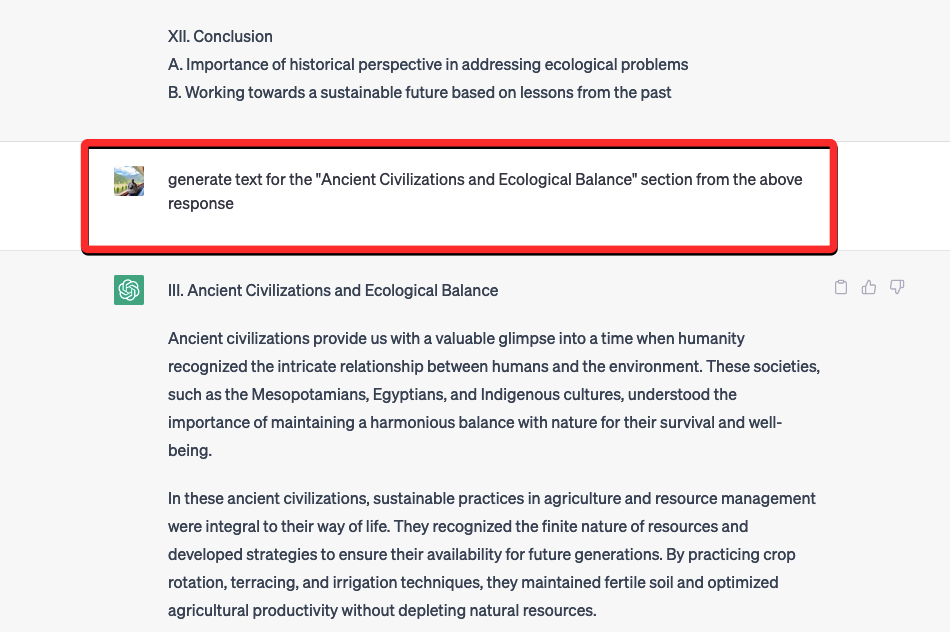
You can then continue generating new text for different subheadings one by one until the end.
Method 3: Use summary
When you don’t wish for ChatGPT to create longer and more detailed responses, you can avoid its responses from getting cut off by asking the AI tool to create shorter summaries on your desired topics. This can be helpful when you want ChatGPT to generate shorter texts which you can use to fill up certain parts of an original post, article, or essay that need not be lengthy.
Since short summaries won’t consume many tokens, the responses from ChatGPT won’t be cut off midway through a paragraph and you’ll be able to generate full responses without truncation.
Can you bypass ChatGPT’s response limit?
Yes and no. If you have a free OpenAI account to use ChatGPT, the maximum number of tokens that constitutes a question and its answer is 4,096 tokens since your account will have GPT-3.5 set as default. To bypass this limit, you must subscribe to ChatGPT+ which offers access to GPT-4 where you may get twice as much longer response than on GPT3.5. This is because GPT-4 supports up to 8,192 tokens, thus providing more room for adding inputs and generating relevant responses.
If you don’t wish to upgrade your account to ChatGPT+, there’s no other way to overcome the token limit. The limit exists to help OpenAI keep its operating costs from getting higher since longer responses require more computational power, meaning more money to run them.
That’s all you need to know about making ChatGPT continue writing.

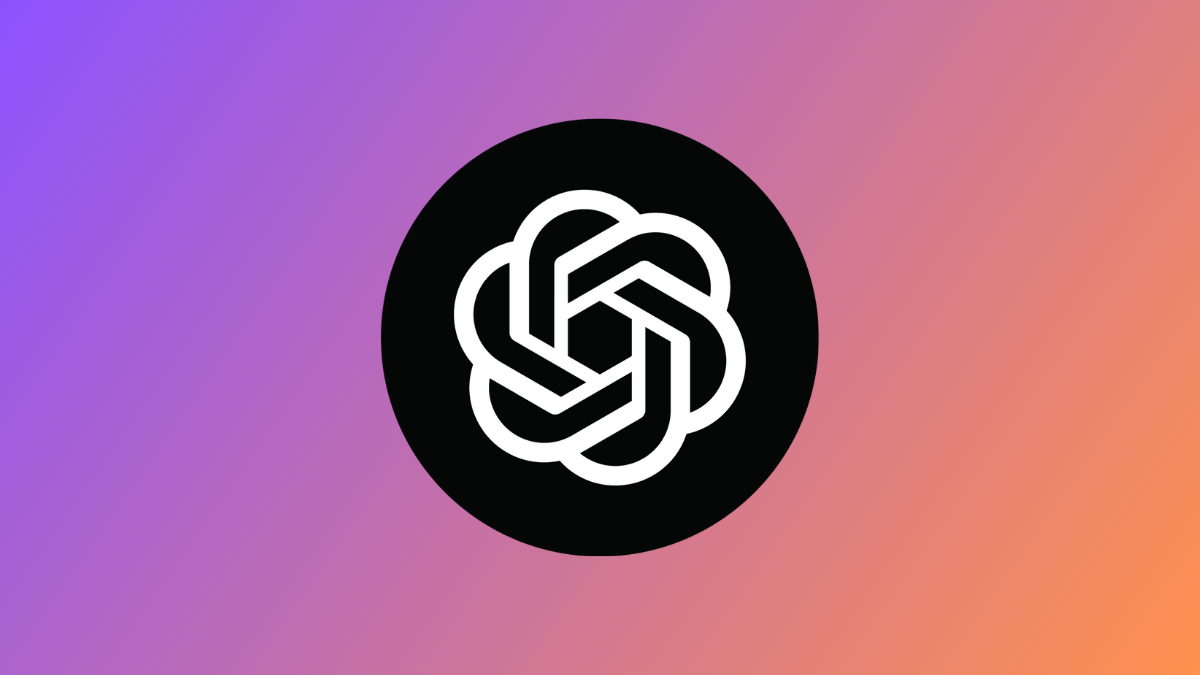











Discussion